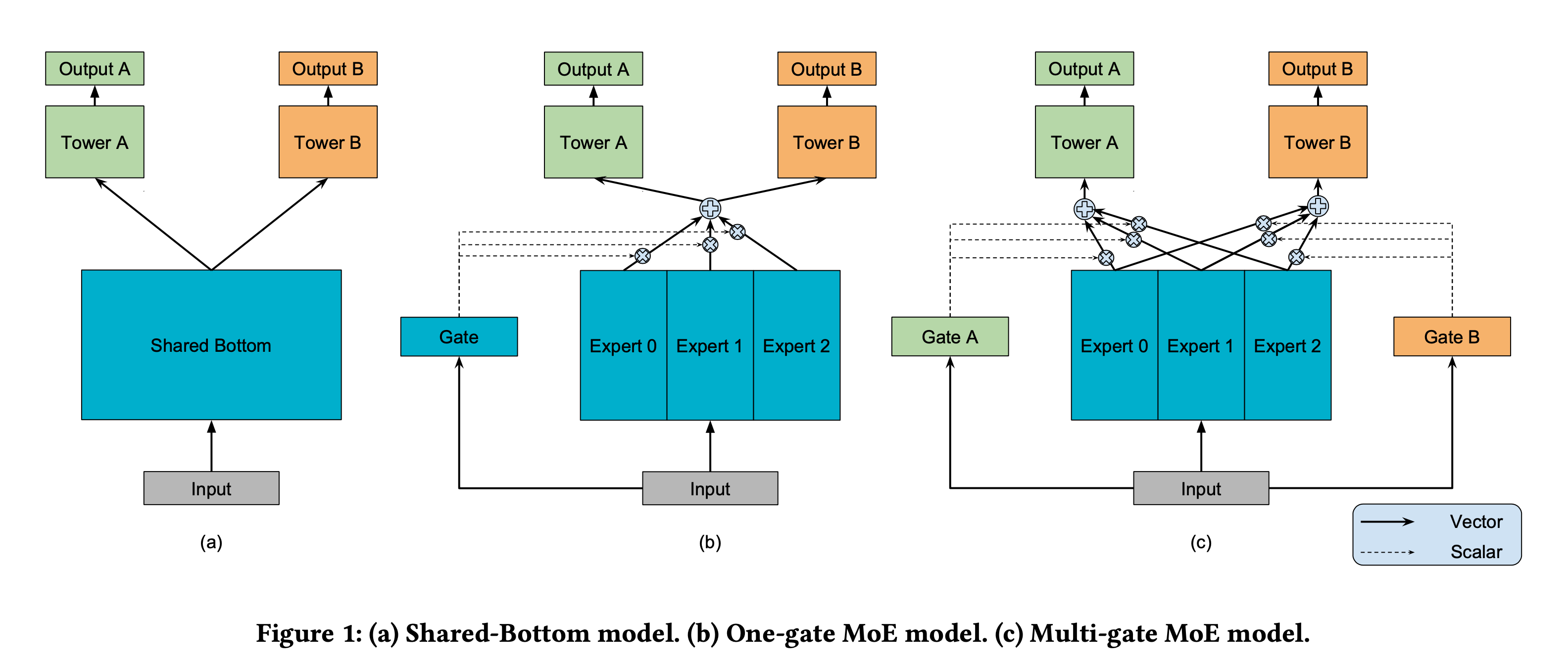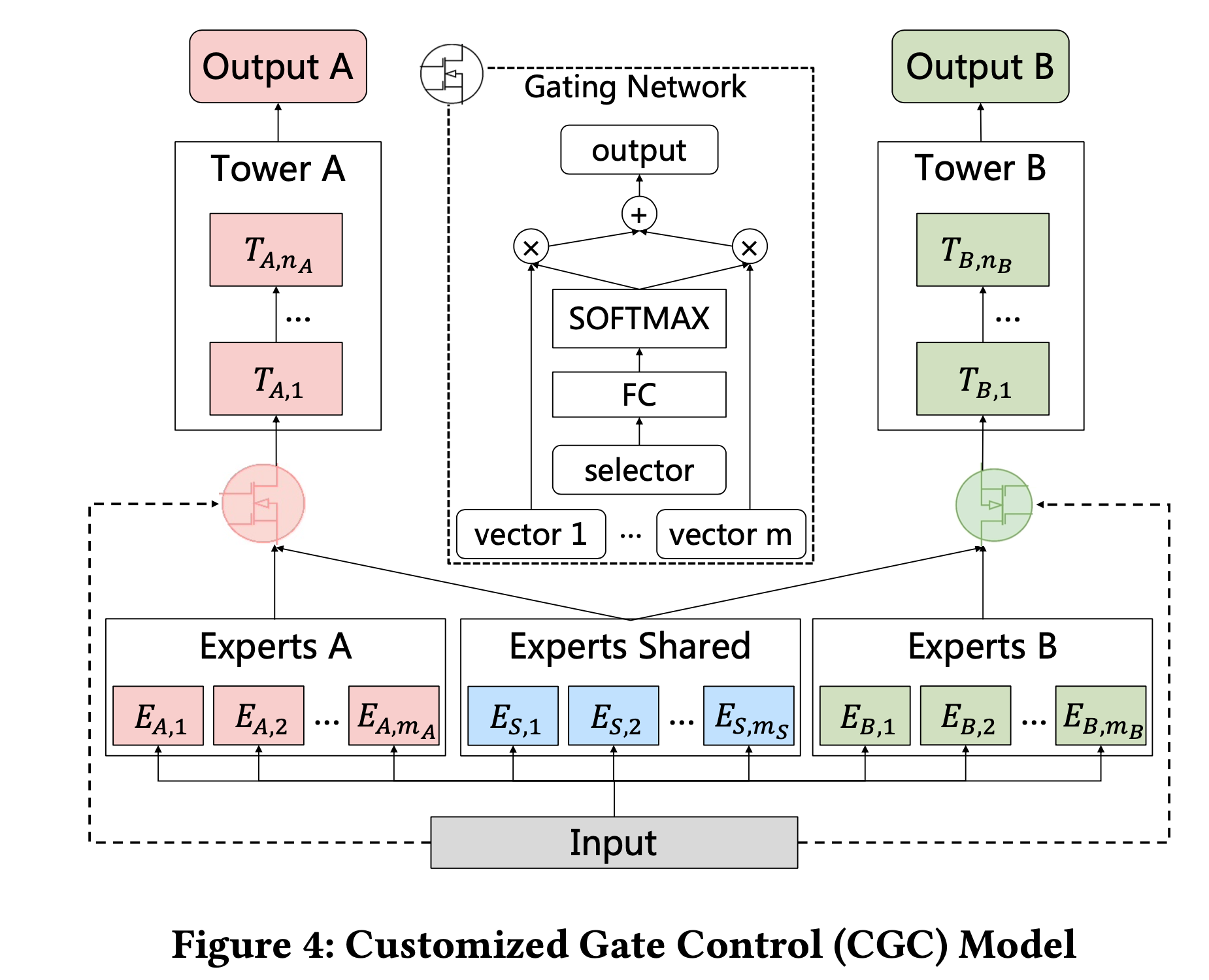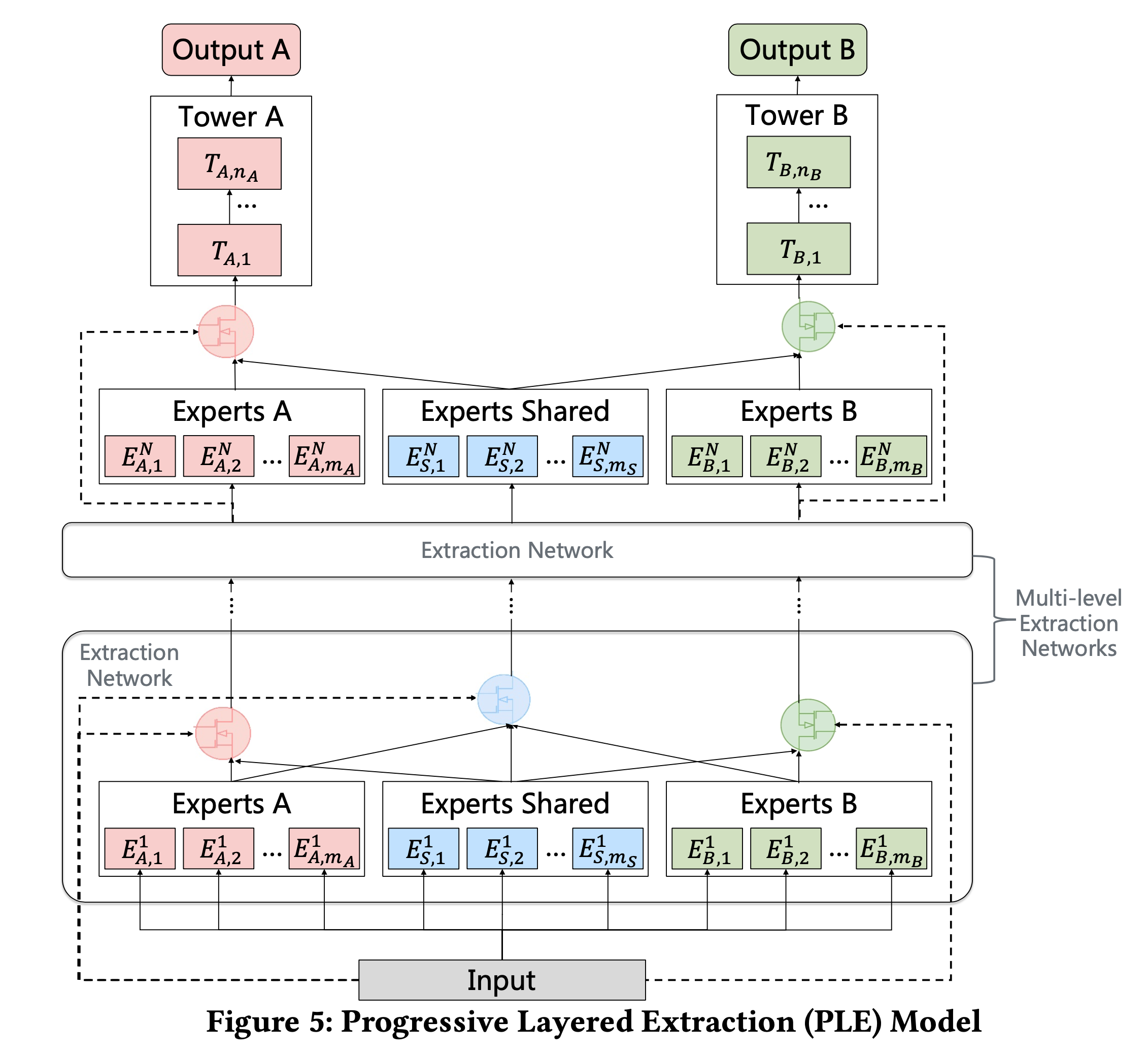This project is developed based on DeepCTR :https://github.com/shenweichen/DeepCTR.
You can easy to use the code to design your multi task learning model for multi regression or classification tasks.
| Model | Description | Paper |
|---|---|---|
| Shared-Bottom | Shared-Bottom | Multitask learning(1998) |
| ESMM | Entire Space Multi-Task Model | Entire Space Multi-Task Model: An Effective Approach for Estimating Post-Click Conversion Rate(SIGIR'18) |
| MMoE | Multi-gate Mixture-of-Experts | Modeling Task Relationships in Multi-task Learning with Multi-gate Mixture-of-Experts(KDD'18) |
| CGC | Customized Gate Control | Progressive Layered Extraction (PLE): A Novel Multi-Task Learning (MTL) Model for Personalized Recommendations(RecSys '20) |
| PLE | Progressive Layered Extraction | Progressive Layered Extraction (PLE): A Novel Multi-Task Learning (MTL) Model for Personalized Recommendations(RecSys '20) |
from ple import PLE
model = PLE(dnn_feature_columns, num_tasks=2, task_types=['binary', 'regression'],
task_names=['task 1','task 2'], num_levels=2, num_experts_specific=8,
num_experts_shared=4, expert_dnn_units=[64,64], gate_dnn_units=[16,16],
tower_dnn_units_lists=[[32,32],[32,32]])
model.compile("adam", loss=["binary_crossentropy", "mean_squared_error"], metrics=['AUC','mae'])
model.fit(X_train, [y_task1, y_task2], batch_size=256, epochs=5, verbose=2)
pred_ans = model.predict(X_test, batch_size=256)Dataset: http://archive.ics.uci.edu/ml/machine-learning-databases/adult/
Task 1: (Classification) aims to predict whether the income exceeds 50K.
Task 2: (Classification) aims to predict this person’s marital status is never married.
Dataset: https://archive.ics.uci.edu/ml/machine-learning-databases/census-income-mld/
Census-income Dataset contains 299,285 samples and 40 features extracted from the 1994 census database.
Task 1: (Classification) aims to predict whether the income exceeds 50K.
Task 2: (Classification) aims to predict this person’s marital status is never married.
Task 1: (Classification) aims to predict whether the education level is at least college.
Task 2: (Classification) aims to predict this person’s marital status is never married.
Experiment Setup (follow MMOE paper) :
#Parameters
learning_rate = 0.01 #Adam
batch_size = 1024
#ESMM
Tower Network: hidden_size=8
#Shared-Bottom
Bottom Network: hidden_size = 16
Tower Network: hidden_size=8
#MMOE
num_experts = 8
Expert Network: hidden_size=16
Tower Network: hidden_size=8
#CGC
num_experts_specific=4
num_experts_shared=4
Expert Network: hidden_size=16
Tower Network: hidden_size=8
#PLE
num_level = 2Experiment Results (AUC)
| Model | Group1 Income |
Group1 Marital Stat |
Group2 Education |
Group2 Marital Stat |
|---|---|---|---|---|
| Shared-Bottom | 0.9478 | 0.9947 | 0.8745 | 0.9945 |
| ESMM | 0.9439 | 0.9904 | 0.8601 | 0.982 |
| MMoE | 0.9463 | 0.9937 | 0.8734 | 0.9946 |
| CGC | 0.9471 | 0.9947 | 0.8736 | 0.9946 |
| PLE | 0.948 | 0.9947 | 0.8737 | 0.9945 |
Notes: We do not implement a hyper-parameter tuner as MMoE paper done. In ESSM experiment, we treat task 2 as CTR and task 1 as CTCVR.



